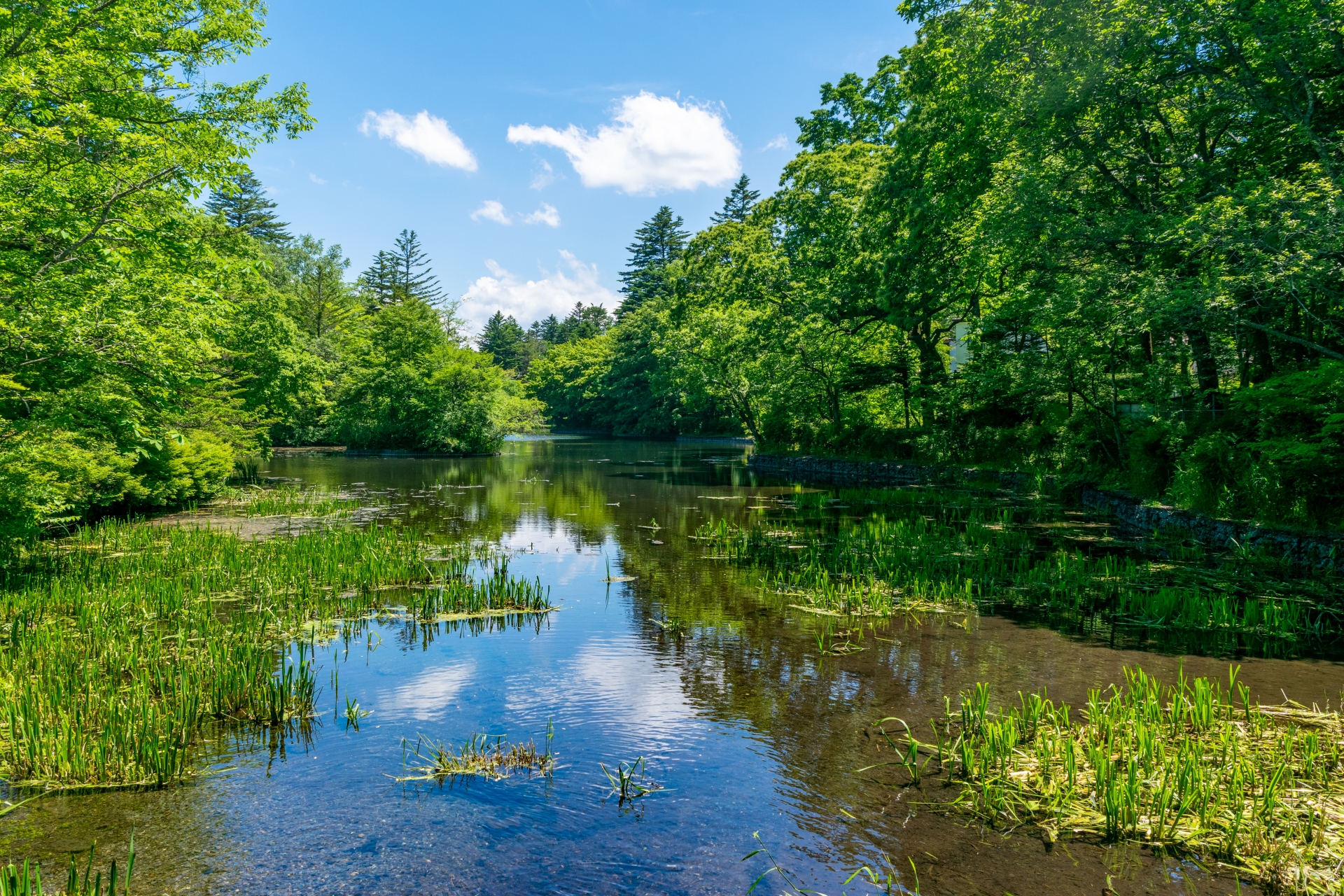
Mao Goto is a Japanese freelancer who was born in Hayama, Kanagawa prefecture, and raised in Tokyo. Since 2016 she lives in the Taito Ward, home to a lot of Japanese culture hotspots such as Asakusa, Akihabara, and Ueno. She has been interested in the field of English education in Japan and got her Master’s degree in March 2020. A lover of photography, travel, sweets, and cross-stitch. Contact her via Facebook.
This post may contain some affiliate links. When you click through and make a purchase we may receive some commission, at no extra cost to you.
There are many delicious foods in Japan, but don’t you feel like eating some sweets or dessert after dinner? Sweets in Japan are called wagashi (和菓子) and they are a favorite snack to many Japanese people. Some of these sweets have a long history, while others are as beautiful as art. From casual wagashi to elegant wagashi served at tea ceremonies, here is a list of 10 recommended Japanese sweets that you should try in Japan.
1. Manju
Manju (饅頭) is a Japanese sweet that comes in many different variations. Manju is a type of steamed cake filled with red bean sweet paste called anko (bean paste). The dough is made by kneading flour and other ingredients before it is steamed. Manju was born in the Muromachi Period, and was first introduced to Japan by a Chinese Buddhist monk who came to Japan to study Zen. Freshly steamed buns are wonderfully delicious and one of the most popular snacks in Japan. The fluffy wrapping of the bun and the gentle sweetness of anko inside are loved by many Japanese people.
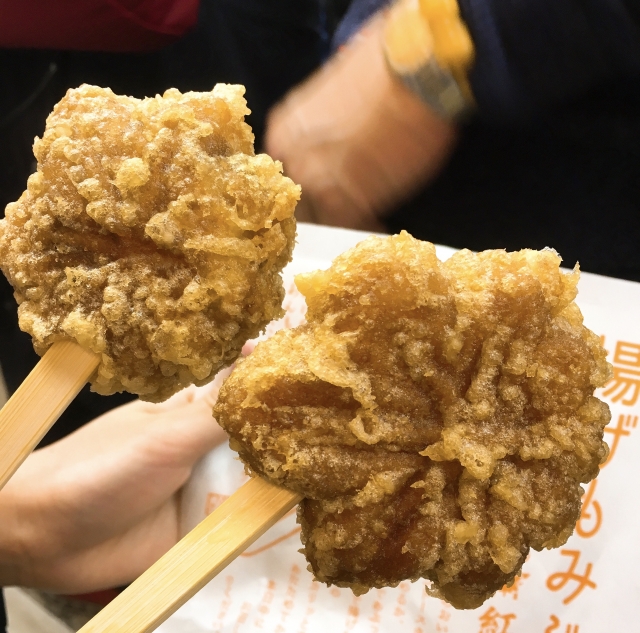

There are many kinds of buns. The filling is not only anko paste, but also white bean paste, chestnut paste, pea paste and, etc. Sometimes brown sugar or kudzu is used for the outer dough. Depending on the ingredients you use, you can make many different variations of Manju like Miyajima’s snack momiji manju.
2. Dorayaki
Dorayaki (どら焼き) is another classic Japanese sweet, which is anko sandwiched between two pieces of dough that look like little pancakes. Some dorayaki have whipped cream or a piece of sweetened chestnut besides anko. Unfortunately, it is still unclear how dorayaki was born in Japan, but the most prevalent story goes back to the Heian Period. Benkei, a Bushi warrior serving to Yoshitsune Minamoto, made a sweet by putting anko in two burned round-shaped dough to show his gratitude to a family that took care of him when wounded. Benkei’s sweet is now said to have become the roots of dorayaki. The combination of softly baked dough and anko is always delicious. You can buy dorayaki everywhere, even at the konbini!

3. Taiyaki
Taiyaki (鯛焼き) is as popular as dorayaki in Japan. While dorayaki is a sweet consisting of anko between two small pancakes, Taiyaki is a sweet made by wrapping anko paste completely in dough shaped like a red snapper before being baked. Anko is the basic taste of Taiyaki, but recently, custard, matcha paste, cherry blossom paste, and chocolate paste are also popular fillings instead of anko.
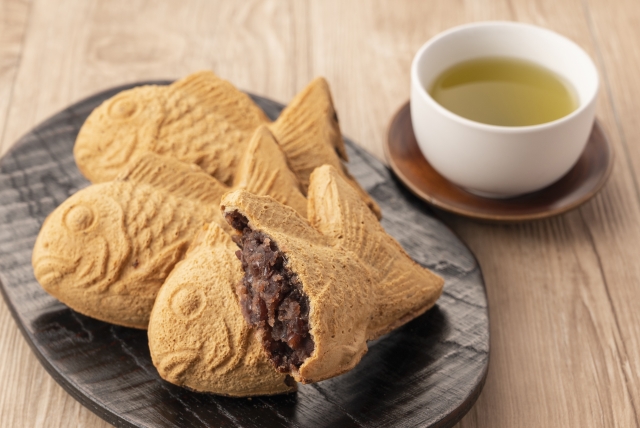
4. Ningyo-yaki
Ningyo-yaki (人形焼) is a little similar to taiyaki, but ningyo-yaki has a more moist dough and is filled with more anko. The word ningyo (人形) means doll in English, and ningyo-yaki is a sweet literally baked in the shape of a doll. There are various designs of ningyo-yaki, but the most famous design is the one in the photo below; Shichifuku-jin (七福神)”, the faces of the seven gods for good fortune. They are bite-sized, so you can’t help eating them for their delicious taste.

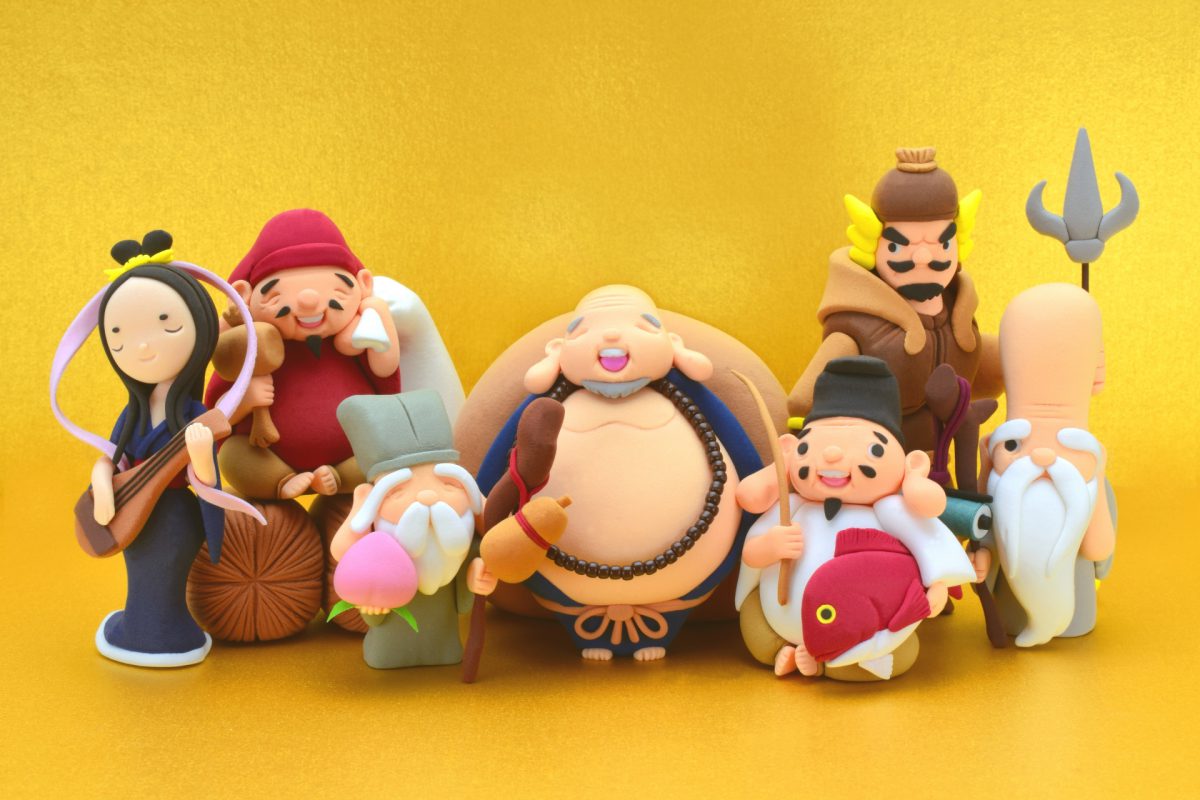
5. Mizu-yokan
Mizu-yokan (水羊羹) is a classic Japanese sweet often eaten during the hot summer in Japan. It can most accurately be described as a Japanese style chilled jelly, shaped in a rectangular block. This sweet appeared in the middle of the Edo Period, but it was not until the Meiji Period when it was widely consumed in the Japanese households. Since mizu-yokan is a raw confectionery, at that time it was very difficult to preserve and often served as a dessert after osechi dishes (おせち料理), the dishes eaten at New Years in Japan. Therefore, people thought of it as a typical winter sweet. However, as mentioned before, today it is a popular snack in summer. Mizu-yokan goes especially well with a cup of matcha tea, the two flavors complement each other perfectly.
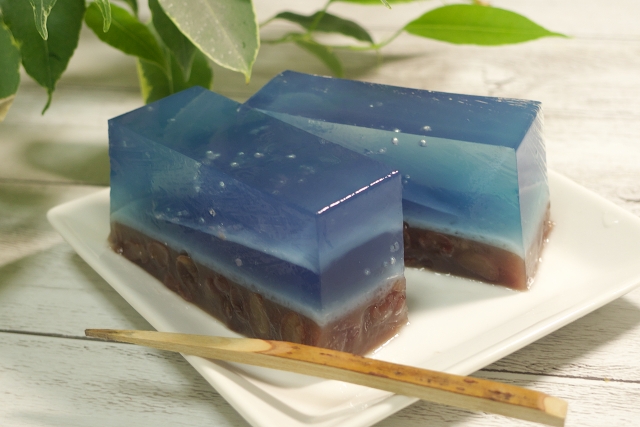
Recently, many beautiful looking mizu-yokan have been produced. For example, there is a mizu-yokan with a starry sky design as shown in the photo above. It’s too beautiful to eat!
6. Castella
Castella (カステラ) is a sweet from Japan that was influenced by Western sweets. It is a Japanese style sponge cake made from a mixture of eggs, sugar and flour. At the end of the Muromachi Period, the Portuguese arrived in Japan, in search of trade, and introduced this cake to Japan. There are many theories about the origin of the word castella but it is widely thought to come from “Castela”, the Portuguese name for the Kingdom of Castile in Spain. One bite of this iconic Japanese souvenir snack will fill your mouth with the gentle flavor of this fluffy cake.
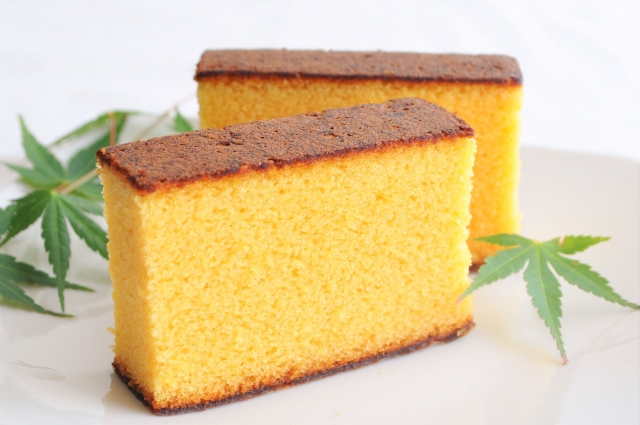
7. Dango
Dango (団子) or Odango (お団子) is made by kneading grinded rice or other grains with (hot) water to make a dough, then rolling it into small balls and boiling or steaming them. Among the different types of dango, the most famous one is mitarashi dango (みたらし団子). Mitarashi is a sauce that matches dango balls and you can make it by simmering down a mixture of shoyu, sugar, potato starch, and water in a pot. Some of the dango balls for mitarashi dango are grilled until the surface gets burned to give them a savory flavor. The harmony of the sweet and slightly salty mitarashi sauce and the dango’s chewy texture is very special.
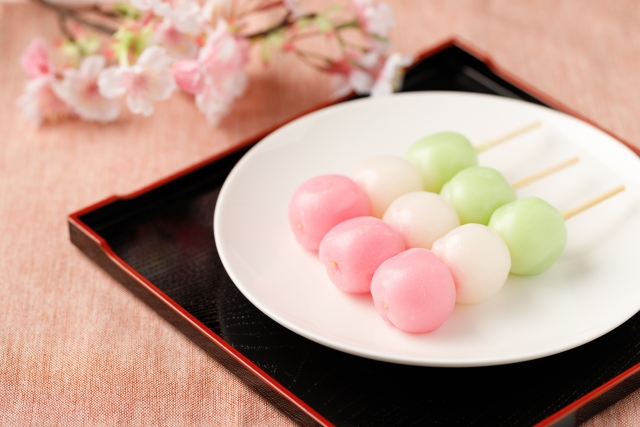
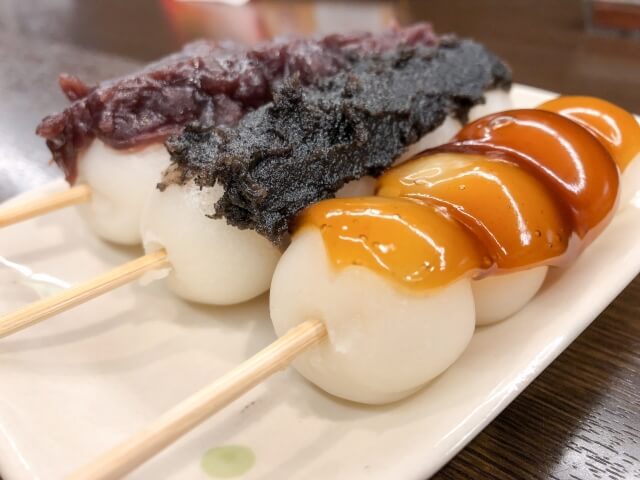
8. Sakuramochi
Sakuramochi (桜餅) is a Japanese sweet popular in spring and differs per region. In fact, the appearance, ingredients and method of making sakuramochi are completely different between Kanto region and Kansai region. While Kanto’s sakuramochi is made by putting anko in baked colored dough, Kansai’s sakuramochi is made by steaming domyoji flour soaked in water, then kneading and putting anko in there to form a straw rice bag. Their common point is, they are both wrapped in one salted cherry leaf. For many people seeing sakuramochi sold at a Japanese sweets shop symbolizes the arrival of spring.
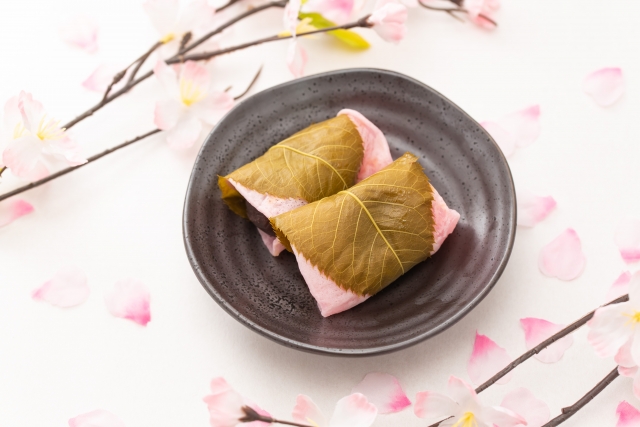
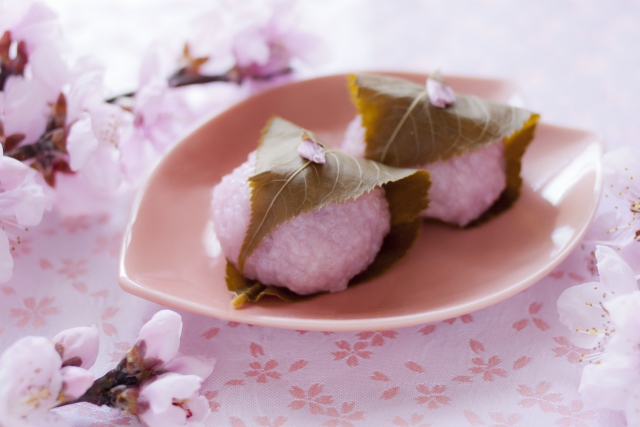
9. Anmitsu
Anmitsu (あんみつ) is another wagashi dessert sweet that is popular in summer in Japan. Originally, it was a sweet of cut pieces of fruits, boiled and cooled red peas, agar jelly, and kuromitsu syrup. When the store Wakamatsu in Ginza, Tokyo, added some anko in mitsumame and started selling it as anmitsu in 1930, it became an instant hit. Today, Anmitsu is sold at many Japanese confectionery stores and restaurants in Tokyo. Fruits used in anmitsu vary from store to store, but often include kiwi, tangerine, pineapple, peaches, and cherries. Kuromitsu is a rich, sweet black sugar syrup and goes well together with anmitsu. Enjoy the fantastic harmony of cut fruits, agar jelly and kuromitsu syrup.
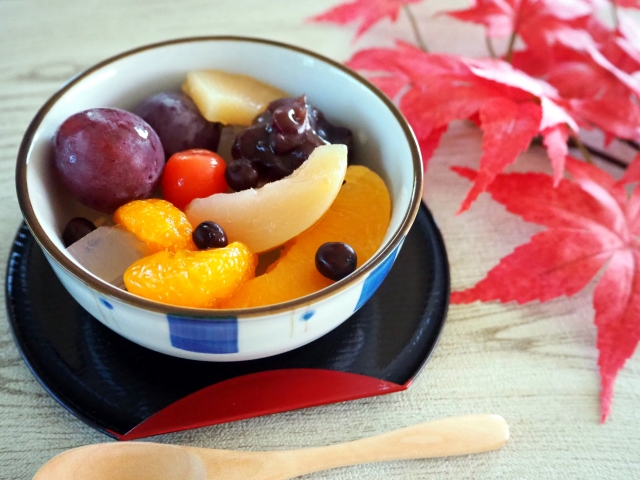
10. Nerikiri
The last wagashi introduced here is nerikiri (練切)”. Nerikiri is an art sweet created by wagashi craftsmen and should reflect the season it is being served in. Nerikiri sweets are so beautiful that they are often served with a bowl of green tea in Japanese tea rooms. The designs of nerikiri vary greatly, like flowers, small animals, fireworks, and other seasonal motifs. The nerikiri craftsman uses a spatula or a wooden triangle tool called “三角棒 (Sankaku-bou)” to make stripes and patterns on the nerikiri. This is how the elaborate pattern of nerikiri is created. Nerikiri consists of a chewy mochi, a Japanese rice cake, filled with 白餡 (shiroan), white bean paste. The deep bitterness of matcha and the elegant sweetness of nerikiri is the perfect combination. Please visit a Japanese teahouse and try it for yourself.
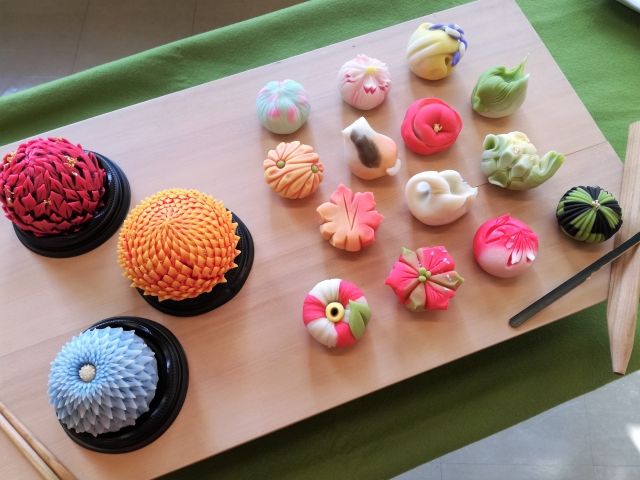
Japanese Sweets Making Experiences
▶Mochi and Traditional Sweets Making Class with Tea Ceremony
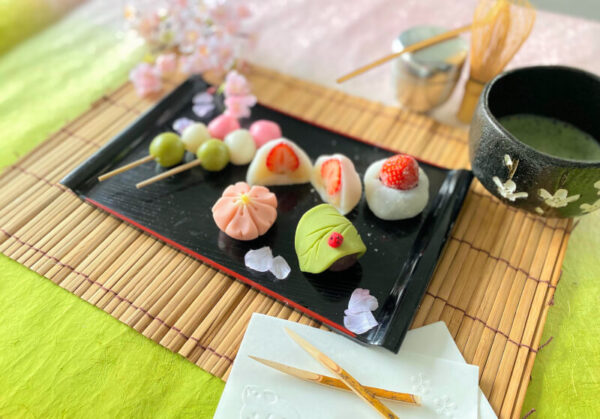
▶Traditional Japanese sweets “Nerikiri”
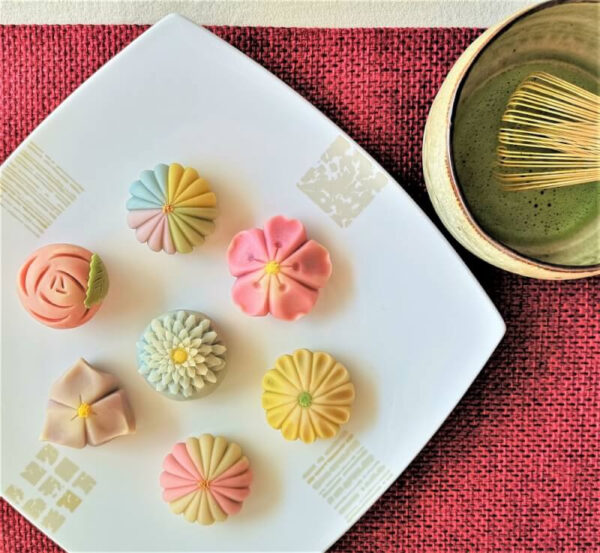
▶Let’s cook DANGO (Japanese sweets) and learn 2 most popular Japanese mom’s dishes
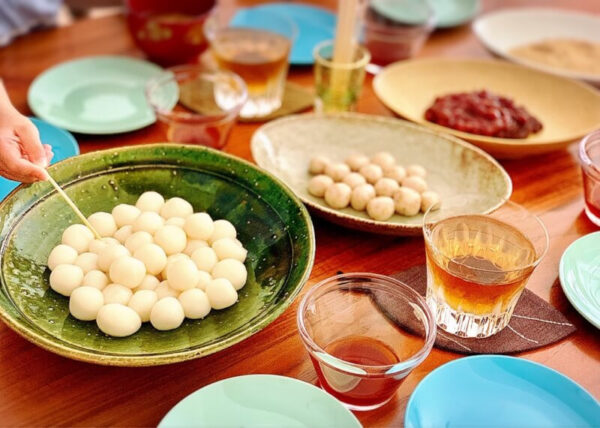
10 kinds of wagashi were introduced here, but have you found any wagashi that you would like to try? Of course, in addition to the wagashi sweets introduced above, many other colorful wagashi sweets are still waiting for you. Please try to find your favorite wagashi when you come to Japan.
Follow us on Instagram, Facebook and Twitter for more travel inspiration. Or tag us to get featured!
Happy traveling!



